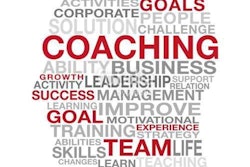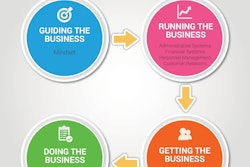
Many smaller landscape businesses rely on one or two people to manage the team. Furthermore, in most cases the company has not developed the necessary systems and processes that allow for business operations to continue in the absence of the owner. Simply said, there is no contingency plan to kick in should any unforeseen issues arise. Any landscape business operating in this way leaves itself open to many problems if the owner is taken to an extended absence.
Because this is a difficult subject, most owners avoid talking about it—or maybe don't even see a need to. They feel invincible. But the fact is, nobody is invincible.
As an owner, have you ever sat down and thought about how the company would continue or be managed without you for a long period of time, or whether it would survive at all?
While contingency planning exists in most large landscape organizations, it is just as relevant to smaller ones. And even though it may seem to be a difficult task, it can be a lot easier than you think if taken at the proper pace.
Here are seven steps to help build a basic contingency plan for your landscape business.
1. Do it now
Do not wait until it’s too late. You’re right that there never seems to be enough time. But you must find time to start on this important process. Don’t put it off or fail to prioritize the completion of the plan. Delaying only makes any potential situation even worse.
2. Appoint a knowledgeable person
One person in the organization must be familiar with all systems and procedures in case of an emergency or absence. This would include records necessary to conduct business on a daily basis. Full knowledge of internal and external systems is imperative to keep things going.
3. Introduce clients to key employees
In many smaller landscape companies, the owner is generally the only public face of the company. Have your customers meet key members of the team who can continue servicing the business in your absence.
4. Cash considerations
Do you have cash on hand at the bank in order to facilitate the business during this difficult time? Who has access to pay bills and invoice clients? Do you have someone in your team who has the authority and skills to maintain the company financially?
5. Insurance protection
Do you have "key person insurance," which could provide additional funds into the company to cover for any additional resource that may be required? As defined by investopedia.com, "key person insurance" is a life insurance policy that a company purchases on a key executive's life. The company is the beneficiary of the plan and pays the insurance policy premiums. This type of insurance is needed if the sudden loss of a key executive would have a large negative effect on the company's operations. The payout provided from the death of the executive essentially buys the company time to find a new person or to implement other strategies to save the business.
6. Get key systems documented
You will need to have written systems which can be duplicated. Are your systems documented or do most of the day to day operational decisions rely on you and what is in your head? If they're simply in your head, they go with you when you must step away from the business. That's not going to help the employees you leave behind.
7. Who will fill the leadership vacuum?
Who manages your staff on a daily basis? Have you delegated key tasks and defined the areas to be managed and regularly reported back on? Who will staff report to in your absence? How will this reporting take place and who will have the authority to manage the staff in your absence?
Here's another big question to answer: When you do nominate someone to step into your shoes, do they fully understand the business and what you want from it?
While this list is by no means exhaustive, hopefully it does give a starting point to work from. There are two golden rules in business that should always be followed: What can go wrong, will go wrong, and if it cannot go on, it will not. Circumstances change, and can happen in a split second. Every landscape business can learn from its experiences—both good and bad. Creating, reviewing and updating a company contingency plans is essential.





















